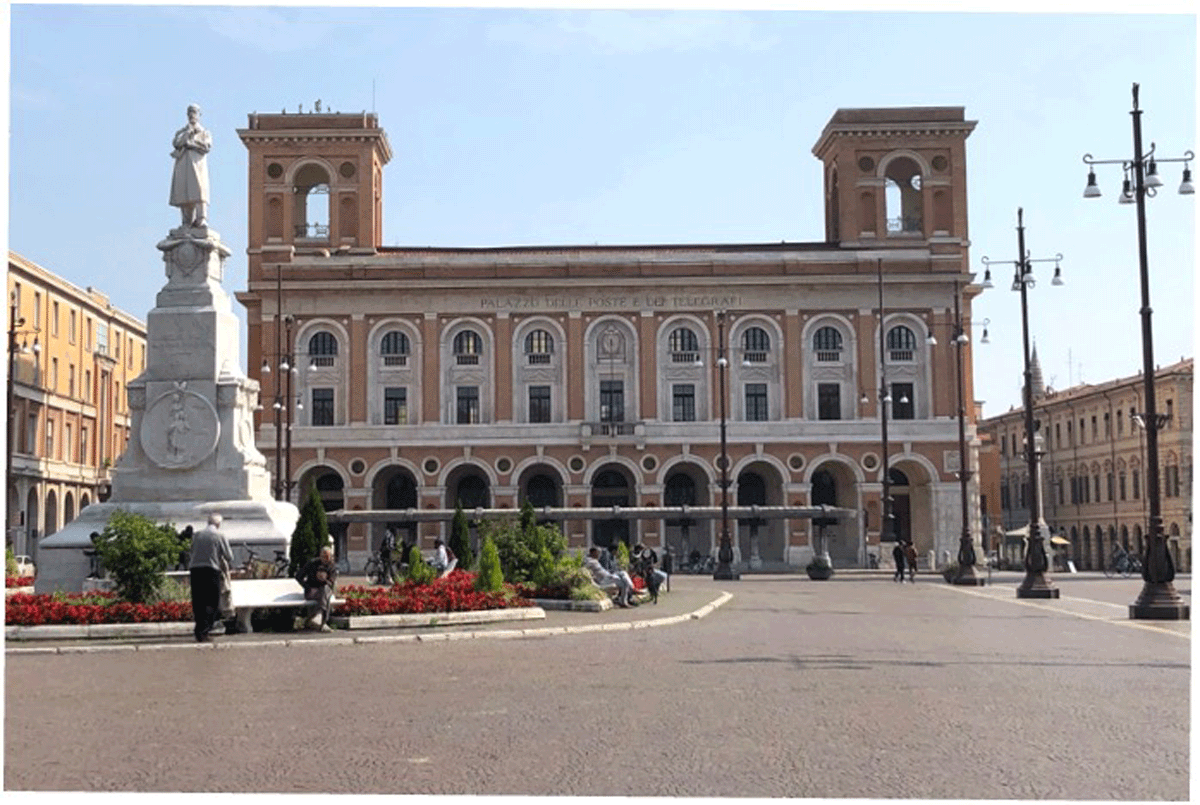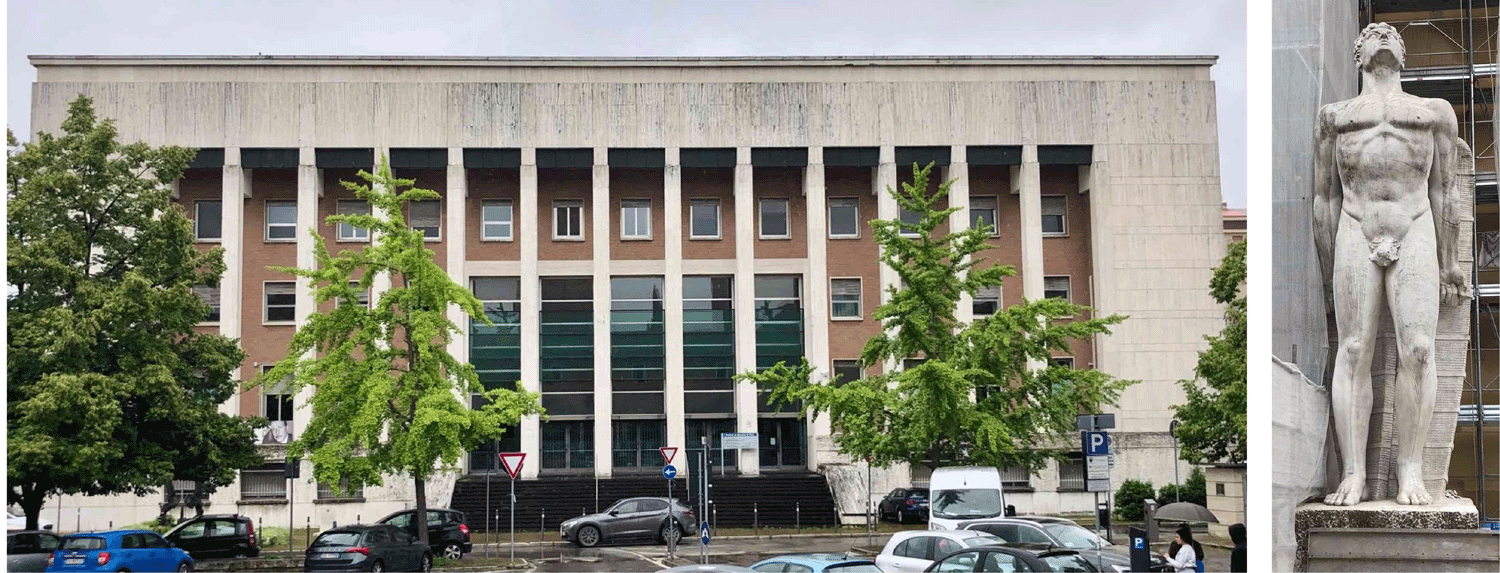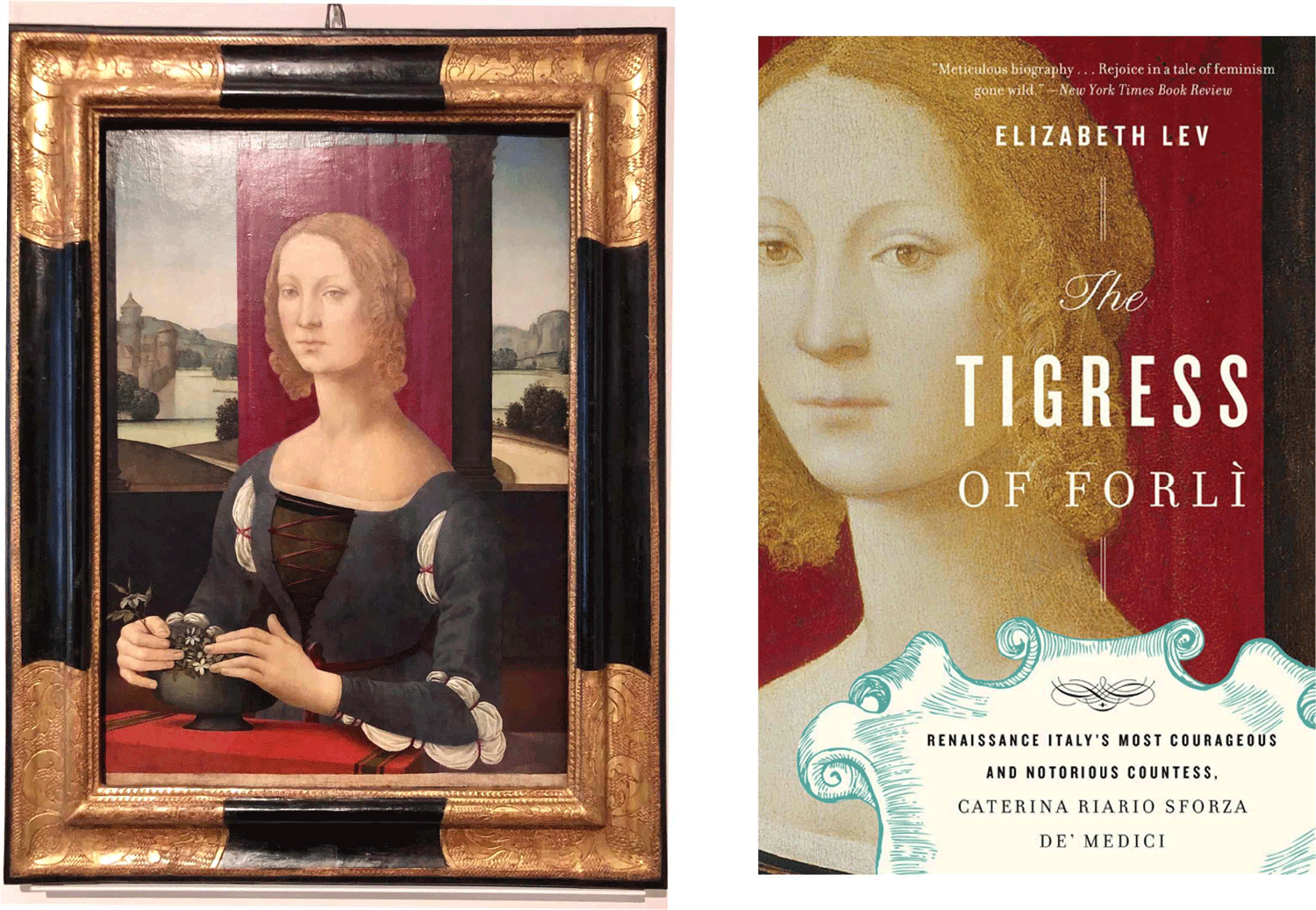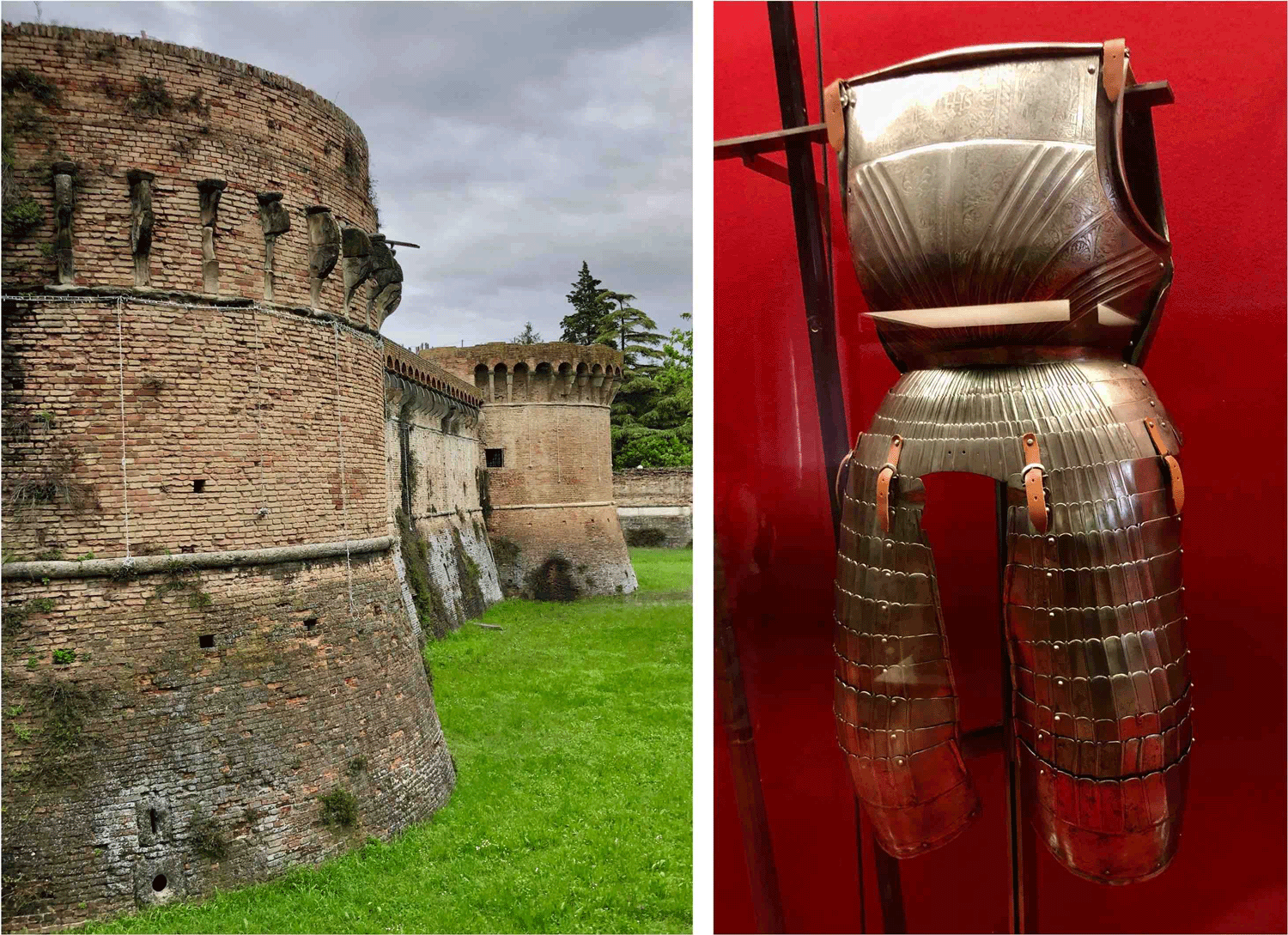Forli
My stay in Bologna had a week-long break – both a nearby Bruce Springsteen concert and a Formula-1 race had hotels & apartments fully booked – so I decided to head to southern Italy. Trying to be a good environmentalist, I booked a train ride down the scenic, Adriatic side of Italy, instead of flying there….. but only made it about an hour outside of Bologna before everything came to a complete stop.
Unfortunately, I was caught in a tremendous rain storm, with epic flooding – the worst in Italy in over 100 years! A later “attribution study” suggested that it was not, in fact, caused by climate change – but it certainly made clear how extremes of weather can have a major impact on the best-laid plans.
Trains were still not running the next day, or the day after, or the day after that either. I finally abandoned plans for southern Italy, and decided to stay the rest of the week in Forli – and if one has to be stranded somewhere, an historic Italian town like Forli is certainly a wonderful place for that to happen.
But Forli is actually a bit schizophrenic – and the city’s tourist map reflects two major themes: the ‘City of Art,’ reflecting cathedrals, art and sculptures of the 1500s and Renaissance period; and Novecento Italiano, literally meaning 900 or ‘900, but referring to twentieth century architecture and art built around the Fascism of Mussolini.

Mussolini was born and raised in the town of Predappio, only ten miles outside of Forli, and he is buried there as well (now a rallying site for right-wing activists). He wanted to make Forli a “mini-Rome,’ and one architectural article notes:
“From 1922 to 1943, Mussolini transformed the city of Forlì into a showcase of modernity, a kind of Fascist prototype, intended to prove the power of the regime and its acceptance by the population.”
Attuned to the City Beautiful movement of the time (noted in previous postings), there is a ‘rationalist quarter’ between the rail station and the downtown (which I first traversed walking, in the pouring rain!). Later, I got to visit some of the modernist buildings near the central piazza, and the statue of Icarus near the Piazza della Vittoria.

More interesting, however, was the city’s other theme – and especially the story of Caterina Riario Sforza de Medici. I had never heard about Caterina (or Forli, for that matter!) – but received an email from my HNC colleague John Urban in China, who told me that I simply had to read about ‘The Tigress of Forli.’ And was he ever correct! It’s an incredibly fascinating story: married at ten years old, mother of eight children, and indefatigable warrior who twice led the defense of the city’s Rocca di Rovaldino fortress.

I thus went to the San Domenico museum to check out her portrait (which served as the book’s cover); to the Rocca di Rovaldino fortress itself; and – on returning to Bologna – to the Museo Civico Medievale to see her armor. Quite enamored by the tale, I also ordered three copies of the book for my three daughters.

A week after my unexpected stop, Forli was still water-logged and the trains were still not running. I caught a bus to Faenza (where Mussolini had attended school and stabbed a schoolmate), and eventually the train back to Bologna.